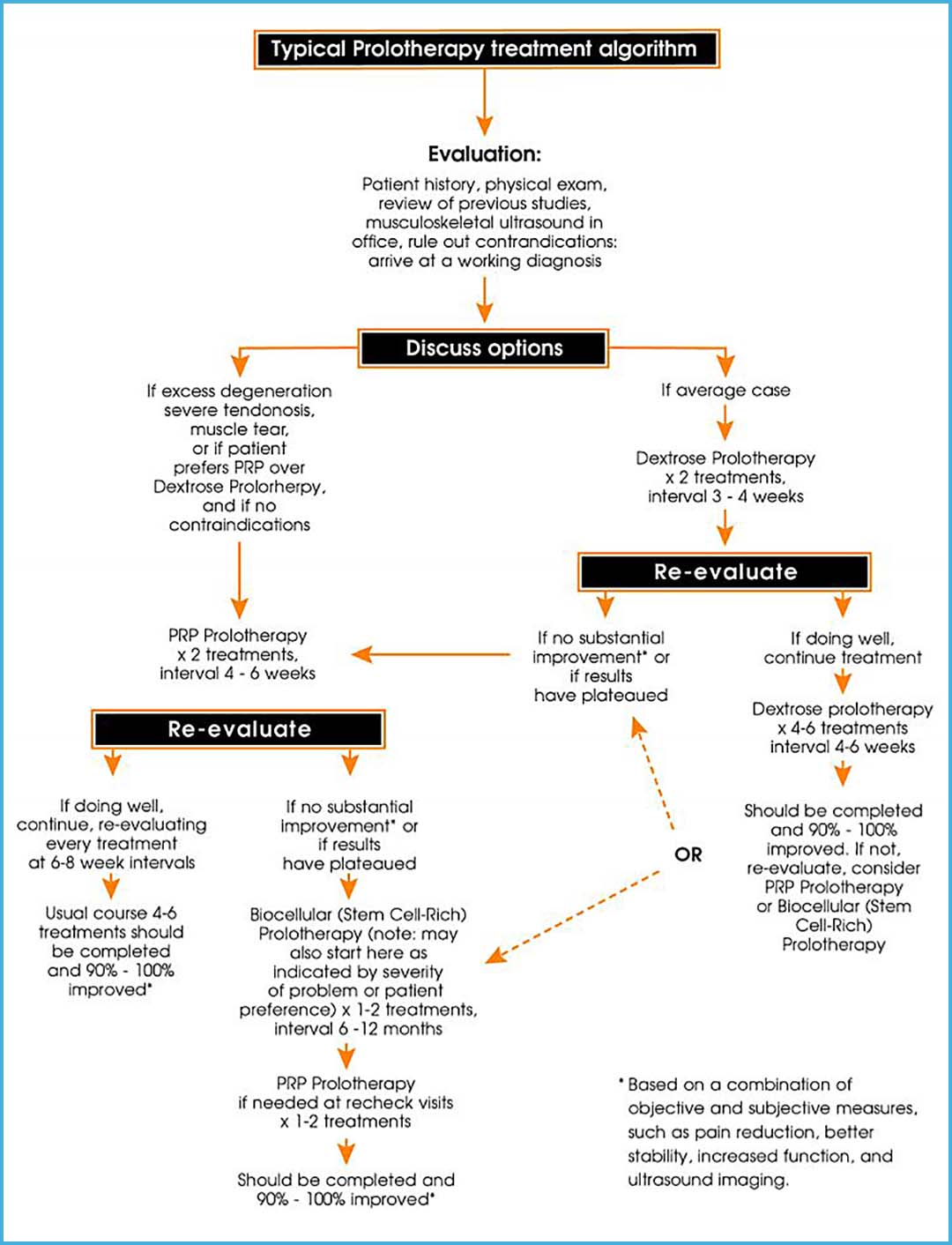Who Is a candidate for Prolotherapy Treatment?
The guidelines for determining who is a candidate for Prolotherapy were published in 1956 in the first physician textbook on the subject. The authors in that text write,
“Criteria for Injection Therapy in New Patients
- Appropriate medical problem
- Desire for recovery
- No underlying medical conditions that would significantly interfere with healing
- Ability and willingness to follow instructions
- Willingness to report progress
- Willingness to receive painful injections in an effort to recover from injury."
These criteria still hold true today. Age is not a factor as long as the individual is healthy, and fits the other criteria. It also does not matter how long the person has been in pain, or how long ago he/she was injured, as long as the person is in good general health.[1]
Prolotherapy Treatment Algorithm
The decision of which formula to use must be evaluated on a case-by-case basis, considering the problem to be addressed, the particular injury site, and the person’s medical history. Only after a thorough evaluation by a physician trained in these techniques, and an extensive discussion of a patient’s needs and expectations, can the best decision be made to determine the optimal course of treatment. To get an idea of how a treatment plan is mapped out, see below: Prolotherapy treatment algorithm (an “algorithm” is commonly used in medicine as a tool in problem-solving and creating a treatment plan).

Bibliography
[1] Hackett GS. Ligament and Tendon Relaxation Treated by Prolotherapy, 1st ed. Charles C. Thomas Publishers, Springfield, Illinois, 1956.